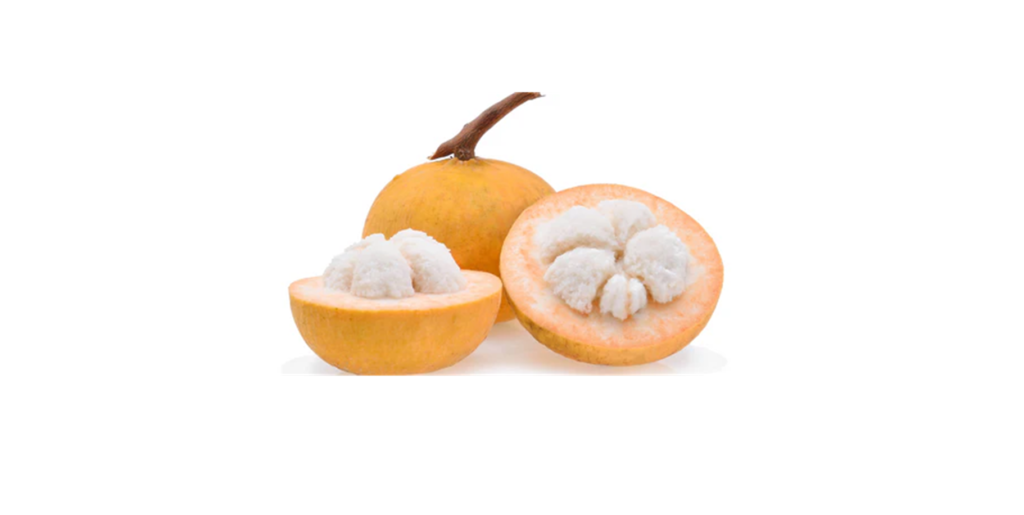If you’re searching for a nutrient-packed, mouth-puckering fruit to biohack your diet and support heart health, let’s talk about santol. This tropical treasure, loved across Southeast Asia for its unique taste and wild health benefits, might be the under-the-radar key to keeping your cholesterol in check—and your taste buds thoroughly entertained. In this post, we’re unpacking the science, culinary secrets, and real-world wisdom around santol, revealing why this cotton fruit deserves a place on your plate and in your heart.
What Is Santol, Anyway?
Santol (Sandoricum koetjape) may look like an exotic lovechild of a peach and mangosteen. The Fruit is Native to Southeast Asia, the round, grapefruit-sized fruit sports a thick, leathery rind but hides a cottony, sweet-tart pulp inside. It’s widely grown in the Philippines, Thailand, Indonesia, and Malaysia, often enjoyed raw, as jams, in curries, or as a tart-and-sweet kick to savory dishes.
The flavor is where santol shines: at once sweet, sour, and slightly spicy, with hints of peach, lychee, and tropical sunshine. But beyond being a treat for the senses, this fruit is earning attention for its impressive lineup of nutrients—fiber, vitamins, antioxidants, and rare compounds you won’t easily find elsewhere.
Santol’s Incredible Nutritional Profile
Let’s break down just how much nutrition is packed into santol’s juicy flesh. Per 100g serving.
- Calories: 88 kcal
- Carbohydrates: 10-28 g
- Dietary Fiber: 4.2 g
- Water: 75-87%
- Protein: 0.8-0.89 g
- Fat: 0.1-0.2 g
- Vitamin C: 30-86 mg
- Vitamin A, B1, B2, B3: Small but bioactive amounts
- Minerals: Calcium (4-10 mg), phosphorus (17-22 mg), iron, folate
This fruit is low in fat and calories but extremely dense in dietary fiber, vital micronutrients, and especially vitamin C—an antioxidant essential for immune and cardiovascular function.
Santol and Cholesterol: What Does the Science Say?
Here’s the big question: can santol really help lower your cholesterol? The answer is yes—and the secret is in its fiber and polyphenol content.
1. High Soluble Fiber & Pectin
Santol is loaded with soluble dietary fiber, including pectin—a type of indigestible carbohydrate renowned for its cholesterol-lowering powers. Soluble fiber binds with dietary fats and cholesterol inside your gut, reducing their absorption and helping to remove excess cholesterol from your system. Multiple sources confirm this effect, noting:
- Santol’s fiber attaches to fats within the intestines, resulting in lower blood cholesterol.
- Both fiber and pectin help trap LDL (bad) cholesterol, making it easier for your body to flush out.
Studies of tropical fruits, including santol, have found that regular consumption of high-fiber, pectin-rich produce can positively influence cholesterol levels over time, especially when combined with an overall healthy lifestyle.
2. Unique Polysaccharides
Santol boasts a distinctive balance of insoluble and soluble dietary fiber. Remarkably, up to 25% of the dry weight of santol is water-extractable polysaccharide, which has superior oil-holding capacity [meaning it can bind dietary fats efficiently]. In a 2021 food chemistry study, santol’s polysaccharides showed strong potential to soak up fats and support the growth of probiotic gut bacteria, which are linked to better cholesterol management and metabolic health.
3. Prebiotic and Gut Health Activity
Santol fiber encourages the growth of beneficial gut bacteria like Lactobacillus acidophilus, selectively supporting healthier microbial communities. Robust gut flora are critical not just for digestion but for cholesterol conversion in the intestine—many gut microbes transform cholesterol into less absorbable forms, helping clear it from your system.
Additional Health Perks: Antioxidant, Anti-Inflammatory and More
Santol isn’t just about cholesterol. Packed with vitamin C, vitamin A, and powerful antioxidants, santol fruit can help:
- Fight free radicals, lowering oxidative stress and cholesterol damage.
- Support immune function, wound healing, and skin health.
- Reduce inflammation, which underpins heart disease and metabolic syndrome.
Early evidence also suggests that santol’s unique plant acids (like sandorinic and bryonotic acids) may protect against allergies and even help regulate blood sugar, though more human studies are needed.
How Much Santol Should You Eat—and Is It Safe?
- Recommended intake: While there’s no official santol “dose,” enjoying one small fruit a few times a week along with other high-fiber foods may support cholesterol management. Remember, the seeds are inedible—always scoop out the cottony flesh and avoid swallowing seeds.
- Precautions: Too much santol fiber can cause digestive discomfort or diarrhea. Those with latex allergies, digestive sensitivity, or kidney issues should be cautious. Always consume in moderation and as part of a balanced diet.
Santol in the Kitchen: Delicious Ways to Eat Your Way to Better Health
Why settle for bland oatmeal or plain bran flakes when you can jazz up your mornings with santol? Here are easy ways to get more santol goodness:
- Raw: Dive into the sweet-sour pulp straight from the peeled fruit—just spit out the seeds.
- Salads: Santol adds zing to tropical fruit salad, pairing well with pineapple, mango, or chili-lime dressings.
- Curries: In Southeast Asia, santol is a popular addition to curries—think coconut milk, tamarind, and fish sauce for a flavor explosion.
- Jam or Chutney: Simmer santol pulp with sugar and spices for a tangy jam.
- Smoothies: Blend santol flesh with banana, coconut water, and ice for a cholesterol-busting energy drink.
The possibilities are endless—and every bite supports your heart and gut health, so you’re biohacking your body deliciously.
Why Santol May Outshine Other “Heart-Healthy” Fruits
A quick comparison shows why santol is starting to stand out:
| Fruit | Soluble Fiber (%) | Vitamin C (mg/100g) | Cholesterol Impact | Culinary Versatility |
|---|---|---|---|---|
| Santol | 12.8 | 30–86 | Excellent | High |
| Apple | ~1 | 5 | Good | High |
| Banana | ~1 | 9 | Moderate | High |
| Passionfruit | 1.7 | 30 | Good | Medium |
Santol’s high soluble fiber and unique polysaccharides give it a superior ability to bind cholesterol and support digestive health, far outpacing more common fruits.
Real-World Experience: Santol Festival, Thailand
Every year, Lopburi, Thailand, celebrates the Santol Festival, where locals share recipes, health tips, and stories about how santol supports their well-being. Many festival-goers note improvements in cholesterol markers, digestion, and overall vitality after making santol a regular part of their diets.
What Does the Future Hold?
New research on santol’s fiber, antioxidants, and probiotic effects promises to further expand how we use this fruit to boost our health. Scientists are now developing santol-based prebiotic powders and cholesterol-lowering extracts—making it easier than ever to tap into the heart-smart power of this tropical fruit.
Into the Biohacker’s Kitchen
If you’re keen to lower your cholesterol while expanding your culinary horizons, here’s how to hack your routine:
- Swap one snack or dessert per week for fresh santol (if available at your local Asian grocery).
- Add santol to fiber-rich recipes—think overnight oats, chia pudding, or yogurt parfaits.
- Create santol salsa: Dice with tomato, onion, and cilantro for a zesty topping.
- Experiment with homemade fermented santol for a double gut-health punch.
Did you find this article helpful? Support us by following us on our social media for more content on natural health and wellness:: Youtube, Instagram, Facebook, Pinterest, Twitter (X)








